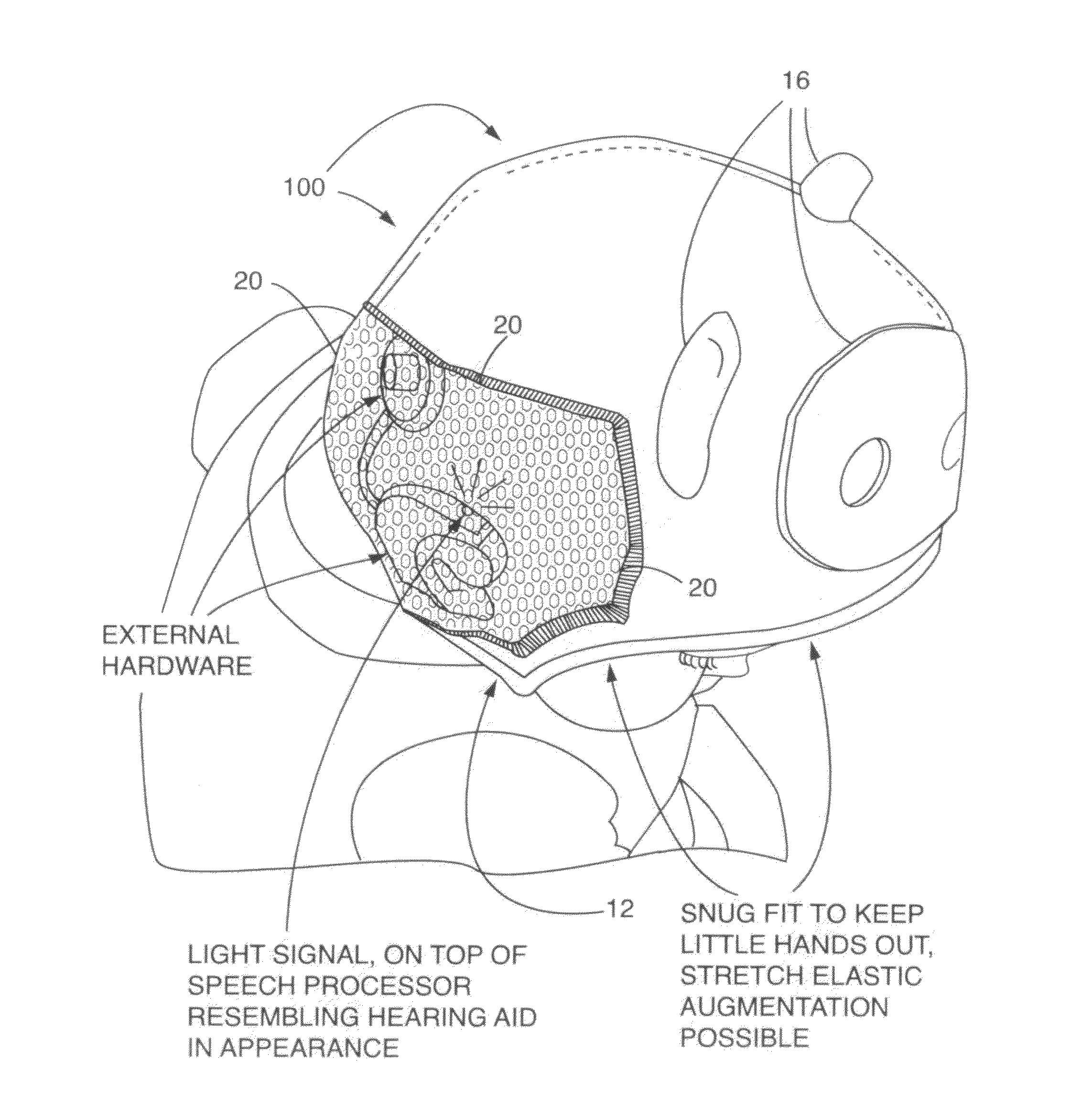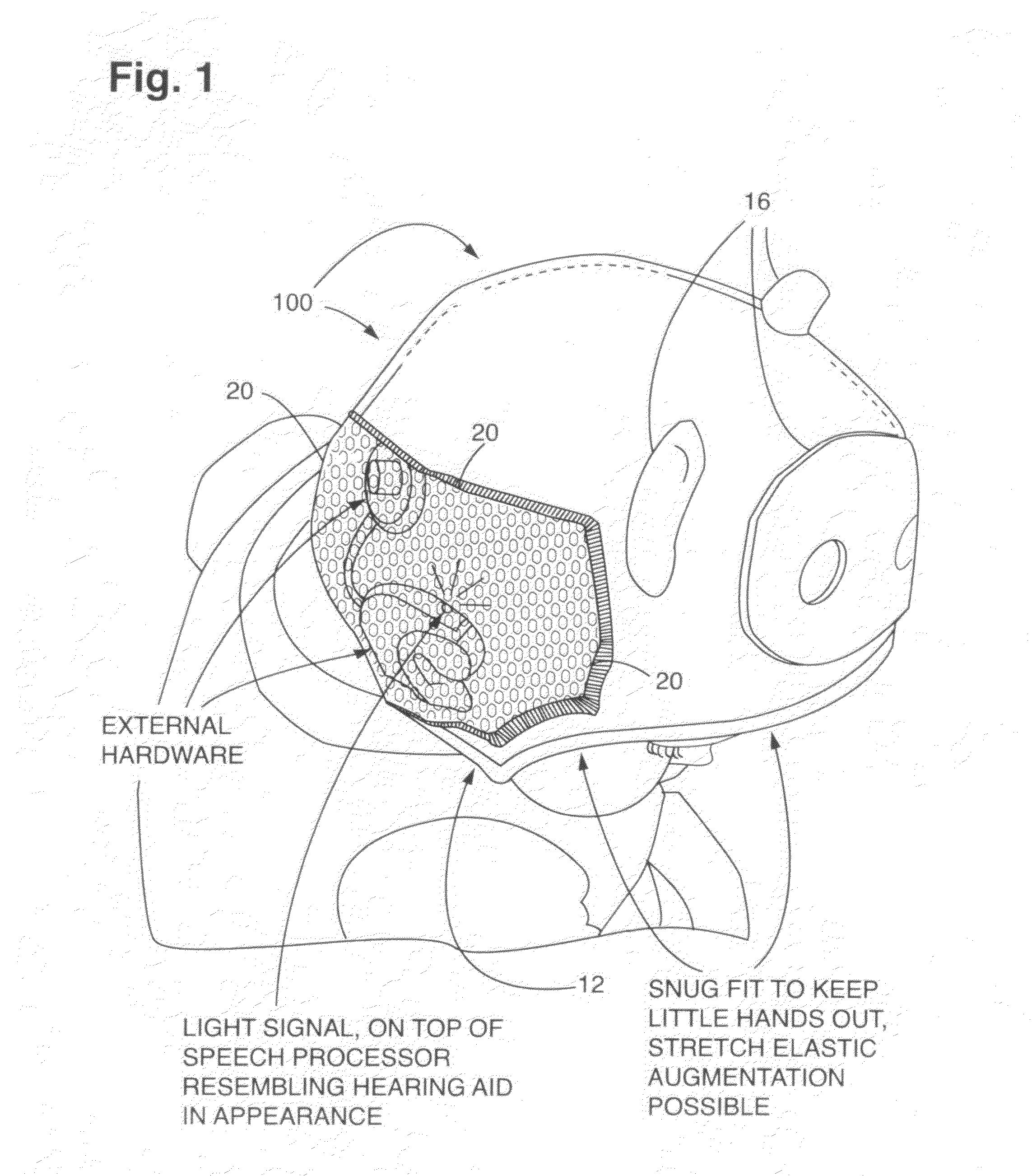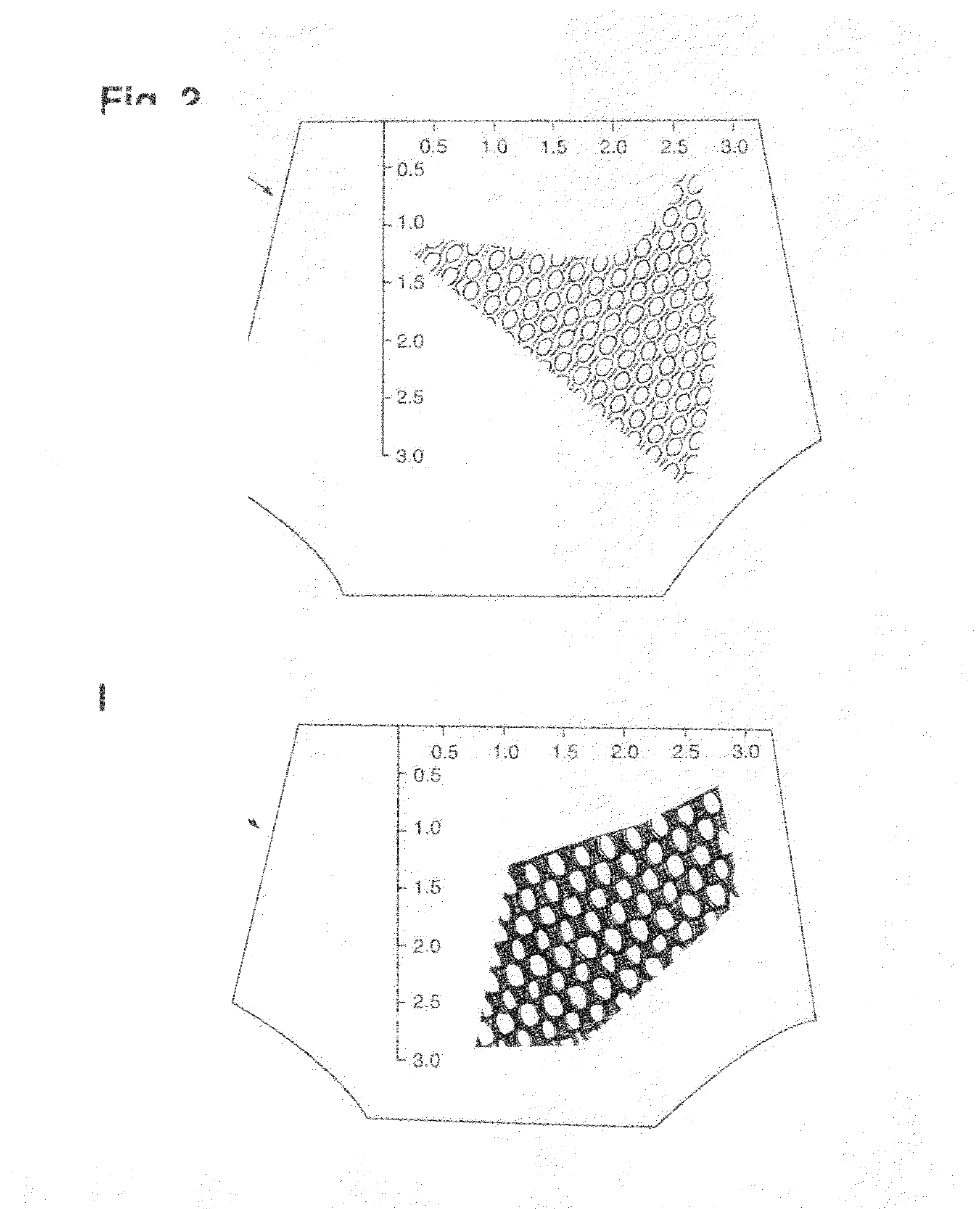Hat for securing external hardware of a cochlear implant
a cochlear implant and hardware technology, applied in the direction of hats, headwear caps, therapy, etc., can solve the problems of ingestion of toxic batteries, difficulty in wearing external hardware, and difficulty in disconnecting the transmitter component from the antenna, so as to increase the desire to wear, increase the aesthetic appeal, and be readily observed
- Summary
- Abstract
- Description
- Claims
- Application Information
AI Technical Summary
Benefits of technology
Problems solved by technology
Method used
Image
Examples
Embodiment Construction
[0037]I am a pediatric audiologist who works with hearing impaired children each day. Some of the pediatric population with whom I get to work have significant hearing loss and deafness, and they are eligible to get a cochlear implant. Cochlear implants are implantable devices placed within the cochlea, which enable deaf children to hear sound. The device includes an external magnetic device that attaches to the back of a child's head and an ear-level processor with microphones. This external device can be easily removed, and is often a source of difficulty for parents of infants and toddlers. Once children of this age become aware that the device can be removed, it becomes a source of entertainment for them.
[0038]With the innovative design of the hats created by Cecelia Marco, however, this issue has been resolved for parents of young children. The soft, breathable material, for example, is very comfortable for infants and toddlers to wear for extended periods of time without getti...
PUM
 Login to View More
Login to View More Abstract
Description
Claims
Application Information
 Login to View More
Login to View More - R&D
- Intellectual Property
- Life Sciences
- Materials
- Tech Scout
- Unparalleled Data Quality
- Higher Quality Content
- 60% Fewer Hallucinations
Browse by: Latest US Patents, China's latest patents, Technical Efficacy Thesaurus, Application Domain, Technology Topic, Popular Technical Reports.
© 2025 PatSnap. All rights reserved.Legal|Privacy policy|Modern Slavery Act Transparency Statement|Sitemap|About US| Contact US: help@patsnap.com



